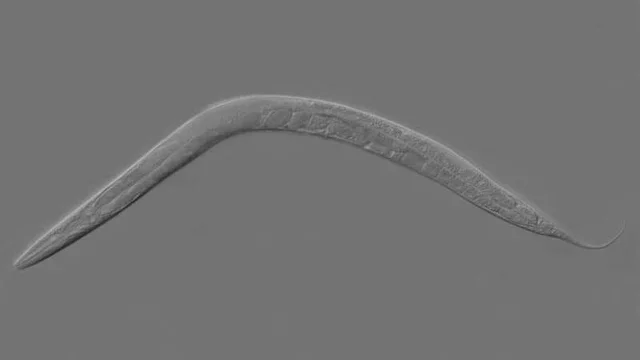0:03 AM A fresh picture of the bacteria "Golden death" digests parasitic worms from the inside out | |
A fresh picture of microbes, Chryseobacterium nematophagum, was found in order to digest its hosts—parasites ascarids—from the inside. The results, which are presented in the journal of open access BMC Biology, hope, in fact, that the bacteria have every chance of potentially being used in the future to control the infestation of round worms in animals, plants and, quite possibly, people. Dr. Anthony page, Institute of Glasgow, author-correspondent: "nematodes, usually referred to as round worms, cause serious acquired diseases in animals and the more widespread in grazing. Some nematodes such as hookworm, infect more people. These parasites have stages of formation, which naturally feed on microbes, before the end owner to get sick. This study outlines a not - so—long-revealed pattern of microbes called Chryseobacterium nematophagum-or the Golden Bacillus of death-that effectively kills a sprawling range of weighty nematode parasites." Scientists have emphasized 2 fresh strains of bacteria-JUb129 and JUb275-from the fluently living round worms found on a putrid Apple in Paris, France, and a lovely Fig tree in Bangalore, India. In laboratory experiments, scientists fed bacteria that produce yellowish mucoid colonies with a sharp aroma to the larvae of the nematode worm C. elegans, a widespread model appearance for the study of pathogens of nematodes. The creators looked, in fact, that the larvae of C. elegans, feeding on microbes, in the direction of the hour became immobilized. Of the larvae uncovered, 50% were killed in the direction of three to four hours. Through 7 hours subsequently uptake of microbes all the worms died. After 24 hours, only contour prints of larvae representing exoskeletons of worms-known as cuticles—were present. C. elegans worms were not reflected stay C. bacteria nematophagum. In laboratory experiments, the worms remained on the bacterial lawns cultivated by the researchers and actively absorbed bacteria that bred from the inside of the worms ' pharynx and digested them from the inside out. Infection and digestion of the throat of worms was accompanied by rupture of microbes in other parts of the body and digestion of the insides of worms, until they were completely absorbed. In order to find out which genes have all the chances to be involved in giving nematodes the killing ability of C. nematophagum, the creators compared the genomes of 2 fresh identified appearances with the genomes of 5 other faces of Chryseobacterium, which are not popular as killing nematodes. They noticed that C. nematophagum actually owns specific genes encoding enzymes that destroy chitin and collagen. These genes are considered part of within 13% of the genome of the microbes, the original for C. nematophagum. The creators of the tested C. nematophagum in front of the various other parasitic nematodes, covering Trichostrongylids and Strongylids worms that infect large livestock and family Pets, and some of them are resistant to cure worms. These worms were killed by bacteria such as C. elegans. Dr. page said: "nematode parasites are quite common, cause disease and have a financial impact on livestock. They are key controlled by a limited group of drugs called anthelmintics, which will become more least effective as such as worms become stubborn to a large number of these drugs. Our results make it possible to imagine that C. nematophagum—or the peculiar qualities that make it very unsafe for many nematodes-may freeze in the future as a means of dealing with increasingly problematic parasites, which are now considered a major burden on social health and the agricultural industry." | |
|
| |
| Total comments: 0 | |
